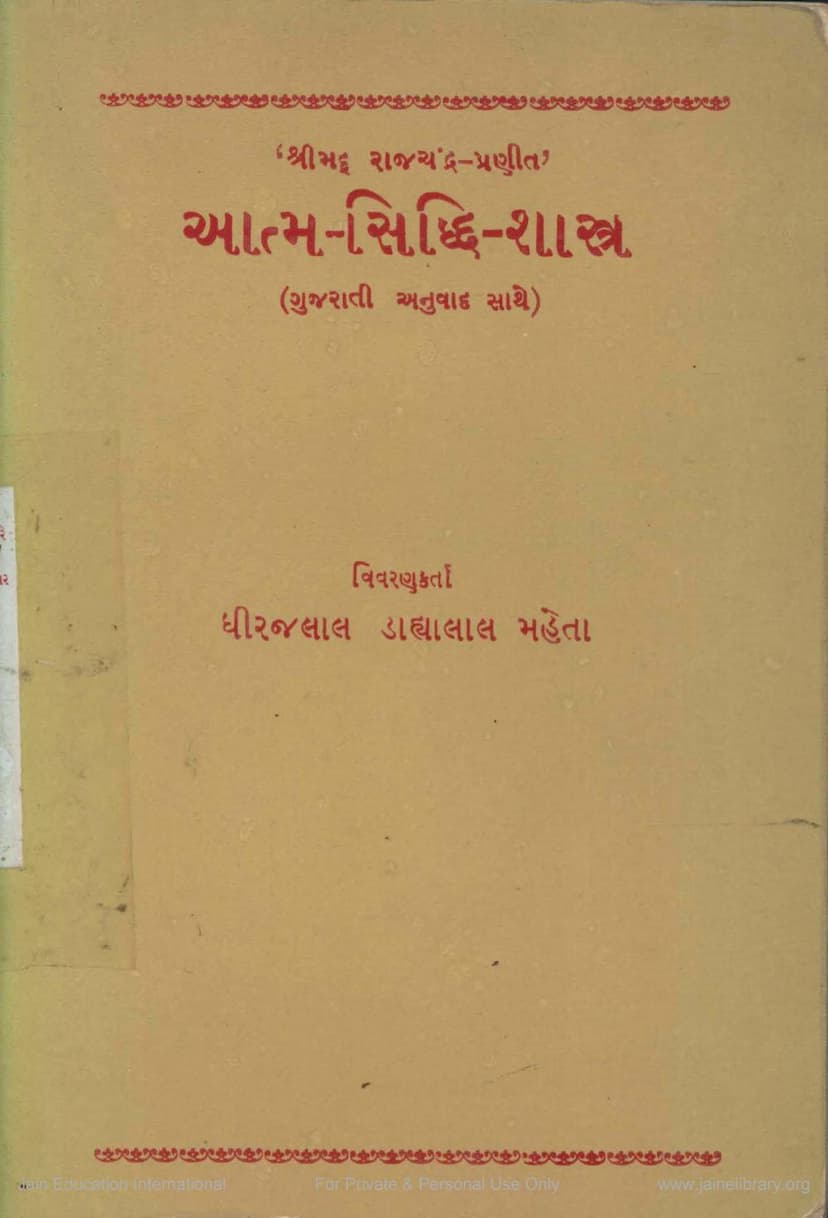Atmasiddhi Shastra
Added to library: September 1, 2025

Summary
Here is a comprehensive summary of the Jain text "Atmasiddhi Shastra" by Shrimad Rajchandra, with Gujarati translation and commentary by Dhirajlal Dahyalal Mehta, based on the provided pages:
The "Atmasiddhi Shastra" is a profound Jain scripture authored by the revered saint Shrimad Rajchandra at the young age of 29. This work, presented in simple Gujarati, aims to enlighten beings about the true nature of the soul.
The text meticulously elucidates the core tenets of Jain philosophy, particularly the relationship between Nishchaya Naya (the ultimate truth) and Vyavahar Naya (the conventional truth). Through the Syadvada (doctrine of manifold aspects), it refutes one-sided views and establishes Anekantavada (the doctrine of non-absolutism).
Key Principles and Teachings:
- Existence and Nature of the Soul: The shastra first logically proves the existence of the soul, dispelling differences in philosophical views. It establishes the soul's eternity, its role as the doer of its actions, and its experience of the consequences of those actions, as described by the Tirthankaras.
- Bondage and Liberation: It asserts that it is the soul itself that is bound by karmas and the physical body, and no other entity. Consequently, it is the soul's own effort and spiritual practice that lead to liberation (Moksha). The text confirms both the possibility of liberation and the means to achieve it.
- The Six Essential Truths (Shat-Sthan): The shastra systematically proves and clarifies the six fundamental truths of existence, which are the soul, its permanence, its agency, its experience, liberation, and the path to liberation. Studying these truths dispels doubts about the soul, purifies faith, and enhances spiritual inclination.
- Critique of Extremes: The text criticizes those who rigidly adhere to either mere ritualistic actions (Kriyajad) or dry, theoretical knowledge (Shushkajnani) without the integration of both. It emphasizes that true liberation arises from the harmonious union of knowledge and practice.
- The Role of a True Guru: The importance of a Sadguru (true spiritual guide) is highlighted. A true guru possesses qualities like self-knowledge, equanimity, compassion, and the ability to impart profound spiritual understanding. Devotion and adherence to the guru's teachings are presented as crucial for spiritual progress.
- The Path to Self-Realization: The shastra outlines the necessity of detachment (Vairagya), renunciation (Tyaga), and the pursuit of self-knowledge. It explains that without cultivating these qualities, true spiritual understanding remains elusive.
- The Six Fundamental Principles (Shat-Pad): The text details six fundamental principles that are essential for understanding the path to liberation:
- The soul exists.
- The soul is eternal.
- The soul is the doer of its own karmas.
- The soul is the experiencer of its own karmas.
- Liberation (Moksha) is possible.
- The path to liberation (righteous conduct and knowledge) exists. The text systematically addresses the doubts and questions a seeker might have regarding these principles, often presented in a dialogue format between a disciple and a guru.
Commentary and Context:
The commentary by Dhirajlal Dahyalal Mehta provides clarification and elaboration on Shrimad Rajchandra's profound verses. The preface by the publisher highlights Shrimad Rajchandra's spiritual stature, his early renunciation, his deep understanding of scriptures, and his impactful spiritual writings penned at a very young age. It also acknowledges financial support for the book's publication.
The text is a guide for spiritual seekers, aiming to remove misconceptions, strengthen faith, and illuminate the path to the ultimate truth of the soul and its inherent bliss. The teachings are presented in a way that is accessible and encourages deep contemplation for the spiritual upliftment of all beings.